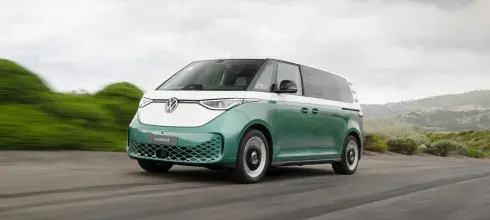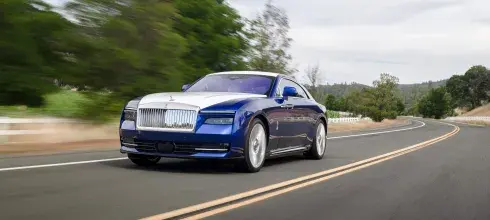
How Car Transportation and Logistics Services are Meeting the Unique Challenges of City Driving
With every year that passes, our cities get bigger and bigger. With such growth comes a unique set of challenges, particularly in relation to logistics services and car transportation in urban areas.
Efficient urban transport is essential because it has a close relationship with economic prosperity and development. However, being able to provide efficient transport means finding answers to a number of problems. These can be categorized into five broad areas:
- Land use
- Congestion
- Car dependence
- Environment
- Other issues such as safety, economic prosperity, and political difficulties
In this post, we’re going to examine these issues and possible solutions because they all have relevance to the provision of car transport services to and from cities across the United States.
Transportation is central to economic activity and trade. Whether people are trading labor and ideas for cash or cash for goods and services, or firms are trading a variety of things with each other, most transactions require the transport of goods or people.
The relationship between trade and transport is a close one. It also justifies the existence of cities because there are numerous advantages in carrying out economic activities in proximity. However, when cities become clogged or weakened, the results are serious. Businesses, residents, and cities all suffer, and the economic costs are high. It can be as much as 2% to 4% of the city's GDP, in the form of lost time, wasted fuel, and higher costs of doing business.
A few years ago, McKinsey and Bloomberg New Energy Finance published a report “An integrated perspective on the future of mobility”. In the report, four trends that are rapidly changing passenger transport were outlined: electrification, autonomy, connectivity, and sharing. These four trends also look set to shape the future of commercial urban transport, which includes car transportation services.
Commercial vehicles (CVs), including auto transport trucks and trailers, contribute disproportionately to urban congestion and pollution. Generally, they generate higher nitrogen-oxide and other emissions due to being more likely to idle, make stops and starts, and block traffic.
Economic growth and the increase of e-commerce and likely to increase the number of CVs on the road. Luckily, there are possible solutions to help relieve the pressure our cities and the car transport service industry are facing.
Why is there a need for change?
There needs to be a change because traffic is made and only getting worse. For example, a trip across London that took 20 minutes in 2012, took almost 25 minutes just 5 years later. In Los Angeles, an average citizen spends more than two full work weeks sitting in traffic every year.
Congestion is annoying, but it’s also expensive. When an auto transport truck and trailer gets stuck in traffic, it costs the business higher fuel and labor costs.
Improving issues is not going to be easy, but with a billion more people living in cities by 2030, something has to be done to improve conditions.
Spending on infrastructure is not keeping pace. So, instead, businesses and individuals must use roads and other assets better. They must also be ready to embrace new technologies.
Potential solutions
A number of solutions have been identified. Some could be implemented immediately, such as night deliveries, route optimization, and order grouping. Other solutions, such as autonomous ground vehicles, robots, and droids are likely, but still several years away from large-scale deployment.
Load pooling
Load pooling uses an online platform to match customers who need space with those that have spare capacity. Such a system reduces delivery-related mileage by 30%. In addition, it reduces vehicle emissions by up to 30% and cuts delivery costs by up to 25%.
Electric vehicles
Electric vehicles significantly reduce CO2, NOx emissions, and particulates, however to what degree depends on the scale of electrification.
EVs are also much quieter than conventional cars which could help persuade the public that night deliveries are acceptable. EVs also improve traffic flow because of their faster acceleration.
Electric trucks and their impact on logistics
Electric trucks are one of the greatest technological advances in urban logistics in recent years. They are powered by one or more electric motors which reduce the truck’s carbon footprint.
Consulting firm PwC recently wrote a report titled “The dawn on electrified trucking” and predicts that the use of electric trucks will be widespread in the coming years.
It is expected that electrically-powered trucks will largely replace conventional trucks in large parts of the world within the next 15 years.
The prediction is that zero-emission vehicles (ZEVs) powered by batteries or fuel cells will account for one-third of all trucks in Greater China, North America, and Europe.
Tesla is developing a Semi, an electric truck with three motors. It can accelerate from 0 to 100 km/h in 20 seconds. It also consumes less than 2 kWh per mile, allowing it to travel around 500 miles on a single charge. It takes just 30 minutes of charging to recover up to 70% of its energy.
Electric truck applications
The transport is looking to electric trucks to help improve efficiency in goods deliveries. Battery evolution and the new generation of motors could encourage the use of electric trucks in urban logistics. They would be used to transport orders to physical points of sale or home addresses.
Last-mile delivery is one of the costliest and most polluting supply chain stages, but it could be optimized with electric trucks. Fossil fuels won’t be used which can reduce logistics costs.
Pros and cons of electric trucks
Companies could benefit from using electric trucks in several ways:
- Energy efficiency: Electric trucks are more efficient than their internal combustion engine cousins. They use between 15% and 20% less energy when idling or braking. This is a massive difference when you compare that to the 64% - 75% of the energy consumed by petrol engines.
- Respect for the environment: There are no polluting gases spewing out of a truck-s tailpipe. Lower CO2 emissions from electric trucks would reduce the transport industry’s carbon footprint. In addition, they would improve air quality in cities.
- Lower energy costs: Petrol and diesel prices continue to rise but a viable option for reducing fuel costs would be to swap out vehicles with internal combustion engines for electric alternatives. Electric trucks will always be more cost-effective, even if the price per kWh rises.
- Less maintenance: Vehicles with electric motors require less maintenance. There is no need for oil changes, coolant, or engine filters. Proper electric truck maintenance only requires a thorough check of the condition of the batteries, brakes, and tires.
- Tax benefits: Many countries promote legislations that offers tax credits to individuals and organizations that choose to use electric vehicles.
On the negative side, the technology is still fairly new, electric trucks still come with a high price tag, and more charging points are needed for the widespread use of electric road transport vehicles.
Night deliveries
Deliveries companies could cut delivery times in half if they delivered at night. They could realize a reduction in delivery costs of up to 40%. It’s also possible to cut vehicle emissions by up to 70%.
Night deliveries are really an option when it comes to car transport. This is because careful inspection plays a key role in providing the service. It would be very difficult for customers and carriers to inspect vehicles in the dark. That being said, auto transport providers would benefit from the reduction in congestion and deliver and pick up customer vehicles much quicker.
Parcel lockers
Parcel lockers are convenient and secure delivery points customers can use to pick up their packages 24/7. They have the potential to save time and mileage because of fewer failed deliveries and more efficient routing.
Vehicle emissions could be cut by up to 70%. A 70% decrease in labor time per parcel could be possible. Per parcel delivery costs could be reduced by 35%.
Autonomous ground vehicles (AGVs)
AGVs, otherwise known as driverless cars, require little or no human intervention. It was expected that they would be widely available by 2020, but this has yet to happen.
Multiple benefits come with autonomous ground vehicles, including a reduction in the delivery cost per parcel of up to 50%. In addition, there is a sharp reduction in CO2, NOx, and particulate emissions. The actual reduction depends on the electrification.
Other benefits include an easing of congestion due to better driving habits and improved navigation.
Urban consolidation centers (UCCs)
UCCs are typically located on the outskirts of cities. They are buildings where packages are brought, sorted, and then dispatched. Goods from several supplies can be consolidated into fewer shipments, optimizing loads and truck sizes.
Delivery trucks using these UCCs can be loaded and routed more efficiently. It’s been estimated that companies in developed, dense cities could save as much as 25% per parcel delivery. They could also reduce delivery-related mileage by up to 45%.
Other benefits include a reduction in vehicle maintenance costs and nitrogen oxide (NOx), CO@, and particulate emissions.
UCCs have been around for many years, but so far, their success has been spotty. Terminal-to-terminal pick-up and deliveries are possible in the auto transport industry but are not very popular. People still prefer to have their vehicles picked up and delivered from outside their doors.
What does the future hold for car transportation and logistics services in urban settings?
The solutions detailed above make sense but the key is in working together is commercial transport in cities is going to be truly transformed.
Different combinations could work in different types of cities, with different customers, and different uses.
Easing the burden of urban traffic requires new technologies, new regulations, and new business models. However, more importantly, it needs new mindsets among consumers, governments, and businesses, if we want a future that’s different and better than the present.
Here at SGT Auto Transport, we keep our ear to the ground for any cost-saving and time-saving technology improvements. It’s our goal to provide the best possible car shipping service for all out customers and we can only do that if we’re prepared to embrace changes.
If you want to know how much it costs to ship your vehicle across the country, use our instant quote calculator today.
Alternatively, we have a team of experienced shipping advisors who would love to speak with you on (864) 546-5038 or via Live Chat.







